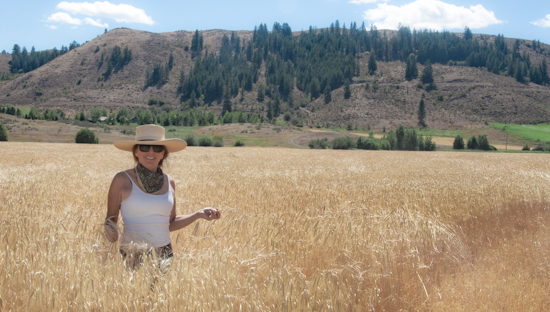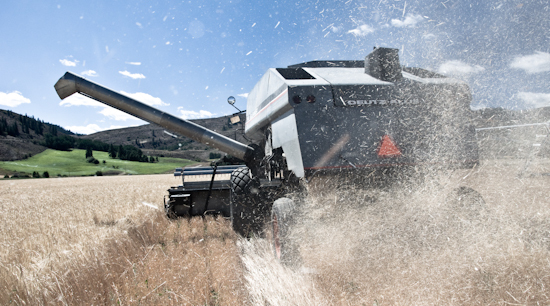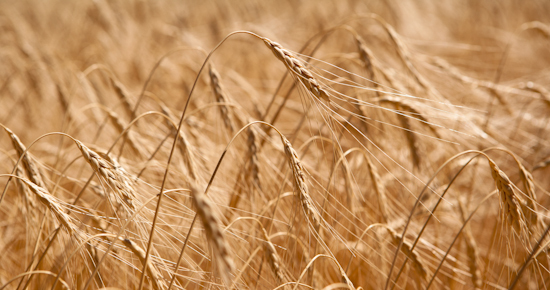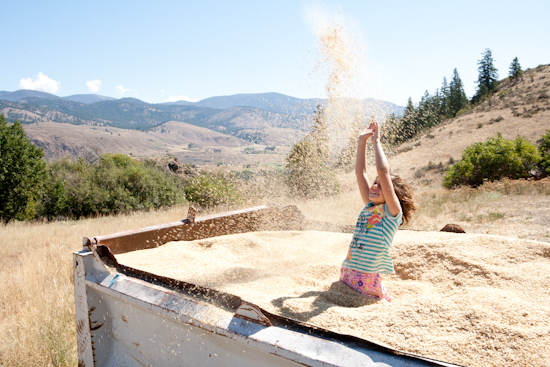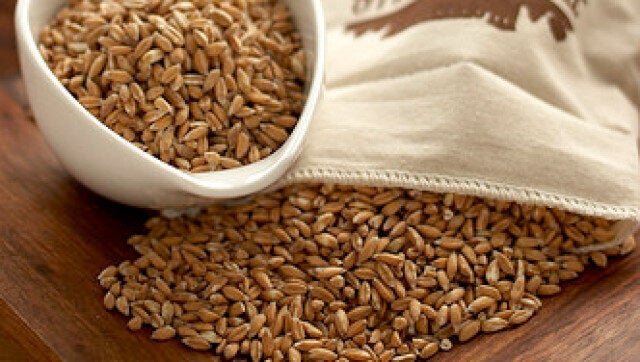
Co-authored with Lee Glenn
With Lee back from sea, our search continues for those making a difference in the progressive foods movement. We're driving east across the Cascades to the lesser known part of Washington state... dry, sunny and scorching hot in August. With keys gifted from Lee's sailing buddies to their quiet cabin in the Methow Valley, we could re-ground, re-group and re-acquaint. This is the northernmost locale on our trip before 2,000 miles back to our desert home. After weeks of nonstop hustle to maintain a tight interview schedule, we had decided that the stories collected from the drive home would have to find us.
Sure enough, one quickly does find us. It's a story that leads to learning more about the nutritional value of wheat and wheat growing than we had ever imagined... a study in contrasts between industrial production and the vision of a couple; between hybridized high gluten grains and protein rich ancient varieties; between large-scale production and biodynamic farming... a story about Bluebird Grain Farms of Winthrop, Wash. and finding ourselves awash in a sea of emmer.
Cultivating 280 acres in several plots, Sam & Brooke Lucy have a different vision of wheat farming. They are compelled by ancient varieties. The climate of the Methow Valley, arid, mountainous, high, extreme weather, led to emmer, also called farro, as a suitable grain. For centuries, emmer has been integral to the Italian culinary scene, but is little known in the U.S. Hearty, disease resistant, twice the protein with a lower gluten content, its nutritional profile resonated with the Lucys.
We drove through picturesque Winthrop and up a dirt road for an impromptu interview at their home and processing facility. Their story unfolds and Brooke learns we've never had emmer, so serves samplings from last nights dinner... a sweet dish of emmer, mozzarella, tomato and basil. This old world heirloom shakes up our taste buds. Plump, chewy, its a nutty full bodied flavor to be savored in soups or salads, risottos or ragout, pies or puddings... here are some recipes.
Brooke calls it a "leap of faith" that there would be a market for a local, nutritious grain, but creating a "specialty product" is the key to Bluebird's success. Call it "locavore" or "slow food" or "nutrient dense," we'd heard the theme before in progressive nutritional and culinary circles.
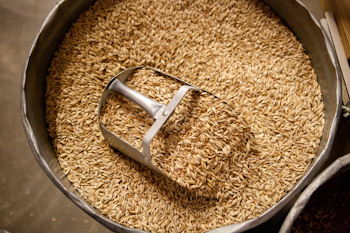 "Most growers send their grain to a processing facility," Brooke explains, "but we felt we needed to do it all to ensure quality in our specialty product."
"Most growers send their grain to a processing facility," Brooke explains, "but we felt we needed to do it all to ensure quality in our specialty product."
The necessity for in-house processing comes from a unique characteristic of emmer... an exceptionally tight hull to be removed. The typical process shaves off the hull which also shaves off germ and bran, the most nutritional part of the grain. Bluebird uses a centrifugal process to remove the hull without damage to the grain. It literally flies out of the hull before being cleaned and sorted... like we said, more about wheat than we had ever imagined.
Starting to grow in 2003, it took three years of development to get going. Early customers included local markets, the Seattle Chefs Collaborative and notable restaurants such as The Herbfarm and Lark. It's a small world... a current client is Portland's New Seasons Markets, subject of a previous story.
Bluebird is particularly proud of its connection to progressive chefs who prize their emmer and rye for unique flavor profiles. "We love that we are connecting with chefs that have the spirit to make something special out of this product."
Next, we're off to meet Sam, threshing the summer's crop in one of their fields. A giant combine at a distance is intriguing. Up close, these machines are enormous, complex, intimidating and very, very loud.
"Emmer grows well, but has harvesting and processing challenges," Sam shouts over the combine. "Hybridized grains have been bred with a shorter stalk and erect heads making threshing easier. Emmer is naturally taller and the heads droop, making it harder to thresh and adding unwanted stalk to the harvest."
For Sam, farming is about building up the health of the soil. "Grains take a tremendous amount of energy. We see the soil as an organism. If we take care of it, it takes care of us."...bio-dynamic farming's essence as also practiced at the Benziger Winery and Occidental Arts.
After threshing, Sam cuts the stalks and plows them in instead of selling them for straw, adding microbes and enzymes before tilling. Typically half of Bluebird's fields are under a cover crop, specifically selected to match the needs of the soil.
Bluebird also uses natural forces for planting.
"We plant during the full moon so seeds have optimal access to moisture from the strong gravitational pull. As the moon wanes, the roots work deeper as moisture recedes in the soil, strengthening them. Also important is turning off the water to stress the grains so they root up nutrients."
The added benefit of this eco-sensitivity... the grain version of terroir. Connecting to natural cycles, every harvest differs due to nuances of the growing season. Compared to the homogenized quality of industrially produced grains, "...the volatility of the season dictates the character of our crop. The farming cycle has an intimate relationship with the earth, planets and our bodies."
We're thrilled to find these ecological threads in a remote Washington state wheat field... but there's more wheat to come. Stay tuned...
